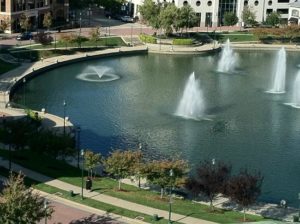To say that things are happening at a dizzying pace would be an understatement.
Last Thursday, our five board of directors, and presentation architect, traveled to Newport News to present our story to Riverside Health System at their corporate offices. This was our first presentation describing who we are, what we have accomplished, and where we are headed.
We told our story, which began in 2014, with the simple idea of creating a neighborhood. As the letter to the editor describes, we asked questions about the fate of Eastern State surplus property (400 acres) in terms of behavioral health care. At the time, our idea was not to create Hope Family Village, a new nonprofit. It was to inspire.
Naively perhaps, we expected a white knight to surface. Offer something different. Innovative. That treasured valuable lives and all that they had to, and do, offer this world. These are our family members and friends who endure mental health conditions. Suggested was one geographic place that integrated housing, work, treatment access, lifelong learning, social connection and coaching. A village.
You have to travel back in time to find the last comprehensive national approach to mental health care in America. The mid-1800s and Dorothea Dix.
As with many great ideas, once we institutionalize them, something changes. Often lost is the vibrance and reason we decided to take action in the first place. The result: we de-institiionalizationed to reaffirm civility, humanity, and respect. The new options and results for many who visit us here are known and unsatisfactory. We were left with complaining that not enough was going done. Care had been lost.
Yet, when we looked around the world, and the United States, we found innovation everywhere. Practiced on a small scale. Serving a very well a small number of people. That’s why these solutions tend to work. They are small and manageable. Certainly, technology can help provide connection, but can we truly replace a live human being caring for another?
The problem is much greater than the our imaginations will allow. Scientific America (July 2017) blogged that studies in New Zealand, America, and Switzerland report that almost all of us are touched by what we label as mental illness. In most cases, it’s a temporary experience. Conservatively, somewhere in the range of 3 – 5%, the condition is permanent. Of this population, only 40% receive “treatment” in a medical and therapeutic sense.
The staggering figure, and, again, conservative, according to the principal investigator, is the number of caregivers of loved ones with a mental illness. It’s 8.4 million.
Our presentation described our answer. Grassroots, bottom-up, ordinary citizen caregiver thinking and acting.
Fairweather Lodge + Cohousing Community = Hope Family Village.
That’s oversimplifying a bit.
Riverside was our first presentation and they were generous with their feedback and ideas. The hospital exemplifies what we seek: Collaborators to join us in building options that are real and last long beyond us, the founding families.


